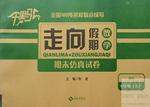阅读理解。
When skateboarding started in the 1960s, skateboards were made of wood and had clay wheels. Since
the wheels did not grip concrete well, riders could do very few tricks with them. Soon people lost interest
in the sport.
In 1973, though, a new wheel was invented in California. It was made of a plastic called urethane (氨基
甲酸酯). A skateboard with these wheels moved very quickly and it also gripped the concrete well. During
the next few years skateboards were further improved. The urethane was perfected, and because the boards
were shaped better, riders liked them better. These skateboards gave new life to skateboarding.
The streets were not safe for skateboarding, although it was easy to ride on the streets. As a result,
skateboard parks sprang up. The first parks appeared in California and Florida. At first there were only outdoor
parks that had concrete slopes with small curves (曲线). Then more exciting parks appeared which had steep
downward slopes, banked curves, and vertical walls. Today, there are both indoor and outdoor parks.
In most of these parks riders must wear helmets (头盔) as well as knee and elbow pads (护肘). This gear
can prevent a fall from causing serious injury.
Whenever they ride, people should always use this safety equipment, and they should learn how to fall
safely. Many accidents happen during the first week of riding, so it is very important that riders be taught well.
1. Why were the new skateboards more popular?
A. They were safer than the older ones.
B. The older models were expensive.
C. They were stronger than the older ones.
D. People could do more tricks with them.
2. The underlined word "grip" in the first paragraph means "_____".
A. move over a surface without slipping
B. stick to
C. replace
D. break down
3. Skateboard parks developed because _____.
A. parents decided it would be a good idea
B. too many accidents happened on the streets
C. many streets did not allow skateboarding
D. most city parks did not allow skateboarding
4. Which of the following statements about skateboard parks is TRUE?
A. The first parks appeared in Scotland and Florida.
B. The earlier parks had steep slopes.
C. In the parks people don't have to wear helmets.
D. At first there weren't any indoor parks.

 千里马走向假期期末仿真试卷寒假系列答案
千里马走向假期期末仿真试卷寒假系列答案